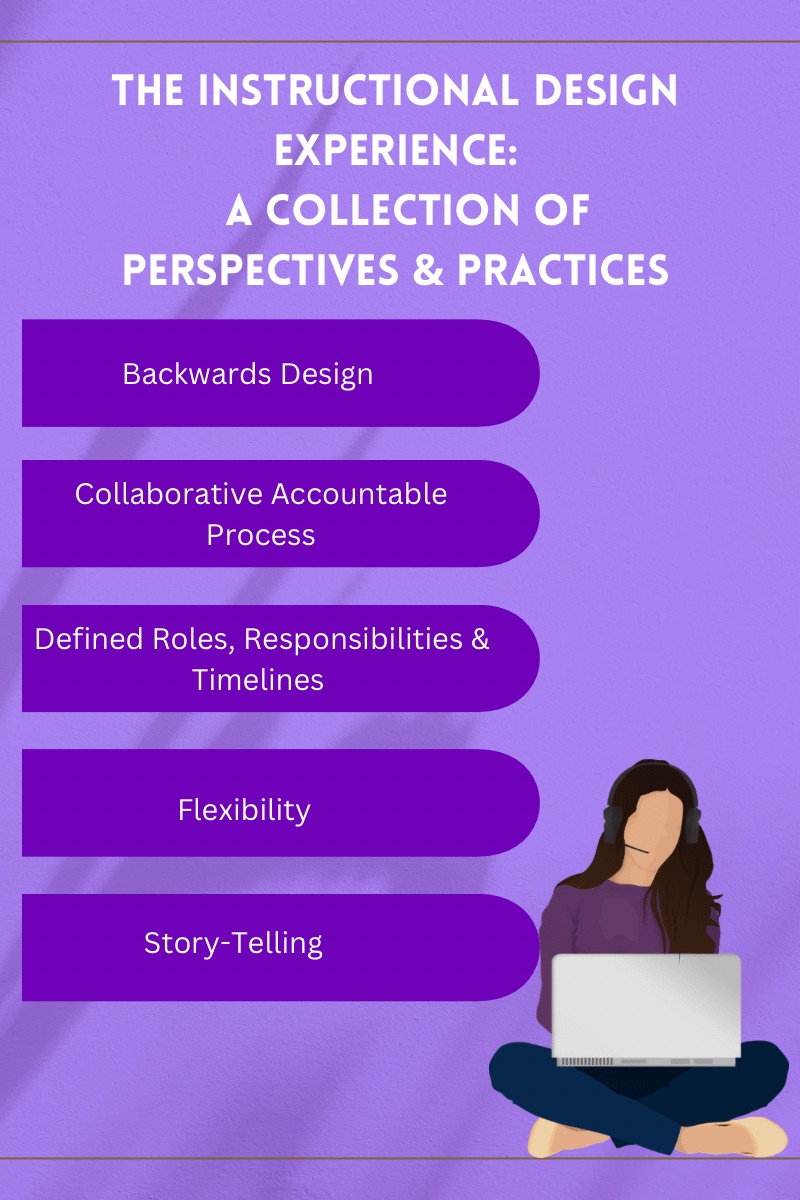The Babb Group is an agile development team of Instructional Designers (IDs), Curriculum Developers (CDs), and Subject Matter Experts (SMEs).
When these individuals assemble and deploy their skills to join TBG’s clients’ in-house staff, they each bring shared and unique approaches, perspectives, and methodologies to their work. It helps them collaborate with any individual or group and acclimate to any academic or training culture.
Below is a summary of key concepts and approaches that, when presented as a collection, represent a sample of the perspectives and practices that is The Babb Group’s unique advantage.
Backwards Design
As an instructor and an instructional designer, Angela Britcher uses ideas from backwards design. Grant Wiggins and Jay McTighe first introduced the concept in their book Understanding by Design. Meeting the learning objectives of the course is the final destination. With backwards design, instructional designers and subject matter experts start working on the course by creating assessments for how learners will demonstrate they’ve met the learning objectives.
You can read more about Angela’s approach here.
Collaborative, Accountable Process
In this virtual-first world, communication becomes even more critical because underlying messages through inflection, body language, and the like are not as evident as they would be in person. Therefore, including more detail than one might assume is needed is another important activity throughout Morgan McAfee’s instructional design process. Morgan likes to follow up each meeting with detailed notes, clearly outlined action items and assignees, and any decisions resulting from the meeting, so if something in the design is questioned in the future, there is a clear reference to why the decision was made.
Click this link to learn more about Morgan’s process.
Defined Roles, Responsibilities & Timelines
Christina Archer emphasizes how important it is for Subject Matter Experts (SMEs) and IDs to set realistic expectations of what can and should be done in the allotted time. With careful planning, the tasks laid out can feel possible to undertake. Expertise is required to do what is realistic while utilizing best practices and meeting the department’s expectations. SMEs and IDs should reiterate their roles and responsibilities whenever it is needed.
Follow the link to read Christina’s full contribution to How I Design.
Flexibility
Every situation, like every course in every program, is different. When it comes to course design, it is impossible to take a one size fits all approach. Michelle Ross believes that instructional designers should go into each situation with flexibility and the mindset that IDs are there to provide as much support as possible throughout the course development process.
Read more about Michelle’s mindset.
Story-Telling
While it may not be as obvious for everyone, as an instructional designer BJ Kennedy approaches each new course as a single story within a larger book. The ID takes the role of the storyteller. The SME knows the topic and shares some key concepts that the ID then weaves into a discussion, assignment, reflection, or group activity. The end goal of the story-telling approach is to take both the student and the instructor through the experience of learning.
Follow BJ’s story here.
To learn more about The Babb Group’s custom design solutions to create online courses and programs, visit https://www.thebabbgroup.com/university-services/custom-design-solutions
Latest posts by Kate Baggott (see all)
- How I Lead: Michael Graham, Vice President of Operations and Technology at NLU - March 22, 2023
- The EdTech News for Friday, March 17, 2023: AI Supports Reading Development, Educators Detect AI-Generated School Work - March 17, 2023
- The EdTech News for Friday, March 10, 2023: Families Coding, Mindsets Changing, and Edusity is Educating - March 10, 2023
